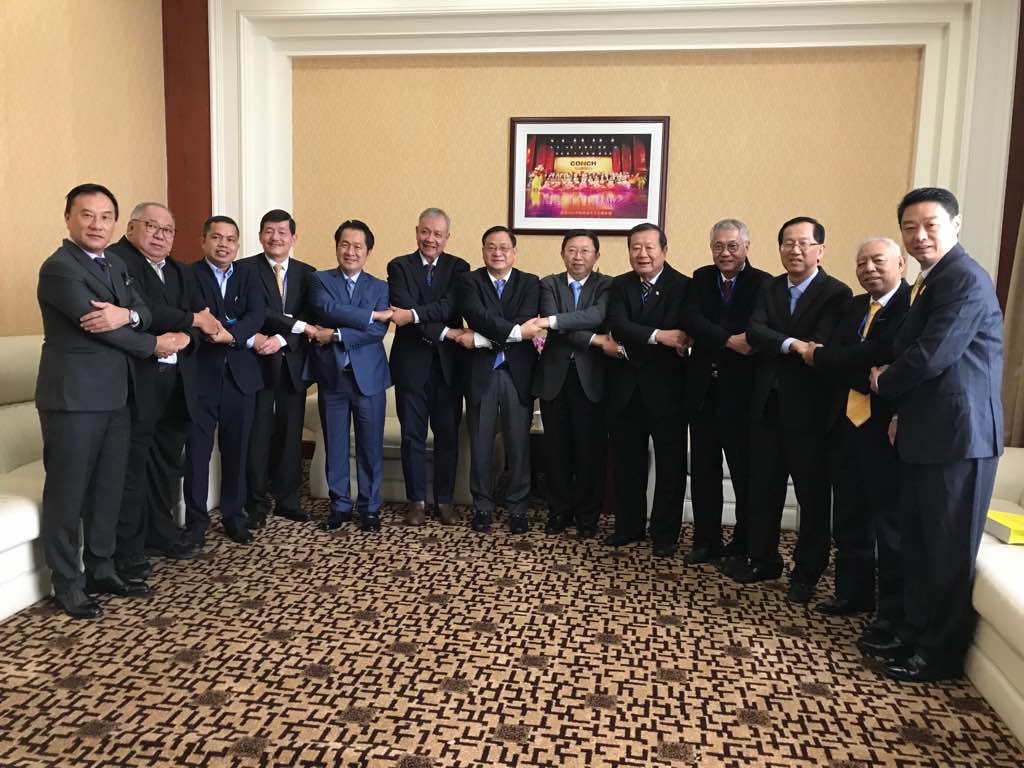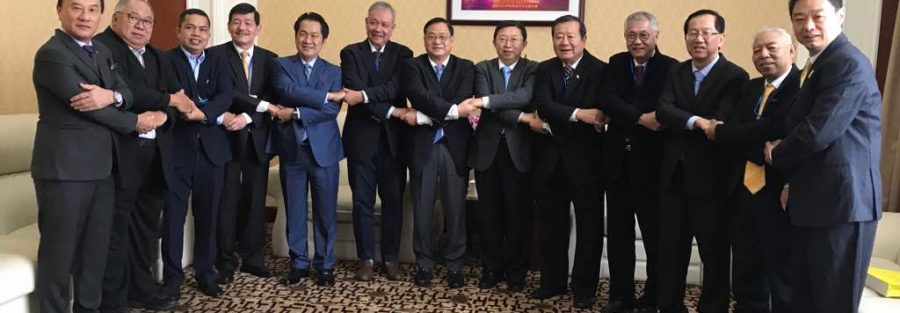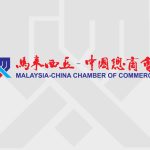
Leaders meet: The President of MCCC, Tan Yew Sing (third from right), attends the China-ASEAN Belt and Road Cold Chain Logistics Economic Development Forum together with the Chairman of the Malaysian Freight Forwarders Association, Alvin Chua (first from left) and China-ASEAN Business Council (CABC) President Xu Ningning (sixth from right).
30 May 2018
Anhui: The China-ASEAN Belt and Road Cold Chain Logistics Economic Development Forum was successfully held on 30 May.
The President of Malaysia-China Chamber of Commerce (MCCC), Tan Yew Sing, was invited to the forum and a closed-door meeting on the China-ASEAN logistics cooperation under the Belt and Road Initiative economic development.
“Based on the geopolitical differences of ASEAN countries, products are diverse and national conditions are mixed, and their consumption is highly complementary. At present, consumer behavior in various countries is an important element of economic development,” Tan stressed.
According to Wang Heling, President of the Anhui Federation of Industry and Commerce, there will be USD 12 trillion logistics opportunities in the world in 2030, with 5 trillion business opportunities in Asia. The representatives in the meeting also expressed great confidence in the development prospects of the cold chain logistics industry.
The China-ASEAN Business Council (CABC) President, Xu Ningning, reported that the total trade volume between ASEAN and China last year accounted for USD 500 billion, while the target for 2020 was USD 1 trillion. At present, the ASEAN economies are one of China’s three largest foreign trade partners (the other two economies are the United States and the European Union). In the first quarter of this year, China’s bilateral trade between China and ASEAN was 20.4% higher than last year and the main strategy is interconnection. The rapid development of the cold chain logistics industry in the ASEAN region is inevitable in the near future.
Executive Vice President of China Cold-Chain Logistics Alliance (CCCA), Liu Jing, summed up the development trend and general situation of the cold chain logistics industry in his talk. First, it is informationization; in particular, the R&D and application of blockchain technologies. Second, it is systematization; from single channel to multi-integrated channel. Third, it is service outsourcing. The participation of external companies includes logistics companies (traditional courier, railway, airlines, warehouse network providers, etc.), e-commerce companies and logistics (self-storage industry development in real estate, logistics plants, etc.).
Various potential and forward-looking cold chain development trends have also been proposed in the meeting including cold chain logistics and large-scale cold chain logistics. The latter will soon embark on the IPO market to create high-quality development, technological innovation to create new business opportunities for cold chain, rapid changes in the function of cold chain logistics, development of integration of cold chain logistics, compliance of cold chain enterprises, environmental protection, sustainable model development and traditional cold chain logistics. Emerging cold chain logistics competition will change the overall industry.



